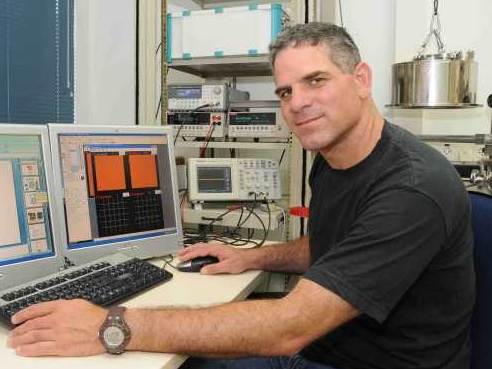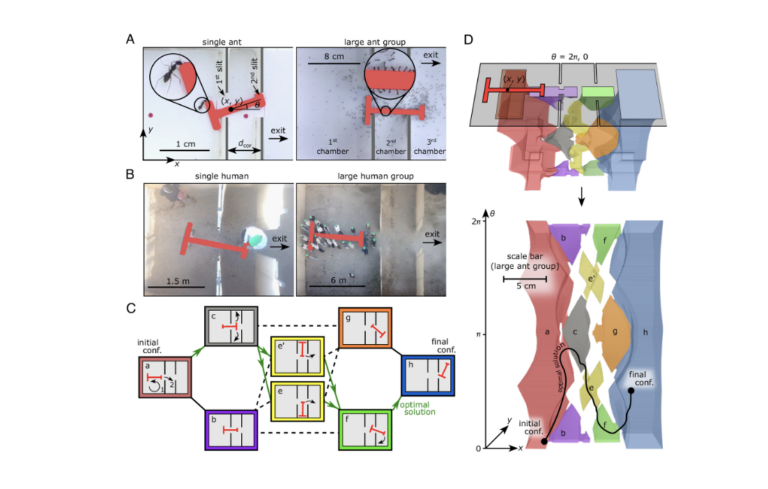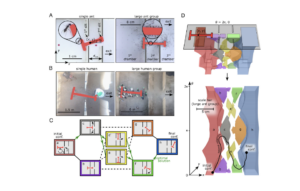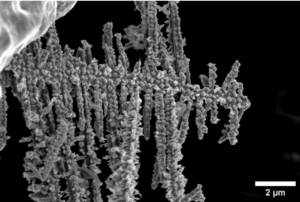Université Hébraïque de Jérusalem : nouvelle percée majeure dans l’électronique moléculaire

[:fr]Dans une étude publiée dans la revue « Nature Nanotechnology », un groupe de chercheurs internationaux a révélé une des plus grandes avancées de cette décennie en ce qui concerne le développement de circuit électrique à base d’ADN. La plus importante révolution technologique du 20ème siècle a été l’émergence d’ordinateurs conduisant à l’ère de la communication et de l’Internet. La principale mesure de cette évolution est la miniaturisation : rendre nos machines plus petites.
Un ordinateur comprenant la mémoire d’un ordinateur portable aujourd’hui était de la taille d’un court de tennis dans les années 1970. Bien que les scientifiques aient fait de grands progrès en ce qui concerne la réduction de la taille individuelle des composants informatiques, ils n’ont pas encore réussi avec succès à réduire la distance entre les transistors, principaux éléments de nos ordinateurs. Ces espaces entre les transistors ont été extrêmement coûteux et beaucoup plus difficiles à miniaturiser, représentant un obstacle dans le développement futur des ordinateurs.
L’électronique moléculaire, qui utilise des molécules comme blocs de construction pour la fabrication de composants électroniques, a été considérée comme l’ultime solution de miniaturisation. Cependant, à ce jour, personne n’avait réussi à fabriquer des circuits électriques complexes utilisant des molécules.
Aujourd’hui, un groupe international de chercheurs dirigé par le professeur Danny Porath, ainsi que Etta et Paul Schankerman, professeur en biomédecine moléculaire à l’Université hébraïque de Jérusalem, a fait une percée importante en ce qui concerne le développement de circuits électriques à base d’ADN. Ils révèlent l’utilisation de mesures reproductibles et quantitatives de flux d’électricité à travers de longues molécules composées de quatre brins d’ADN.
La recherche apparaît dans la prestigieuse revue Nature Nanotechnology sous le titre « Transport de charge longue distance dans des simple molécules d’ADN G-quadruplex. »
Le Prof. Porath est affilié à l’Institut de chimie et au Centre de nanosciences et nanotechnologie de l’Université hébraïque de Jérusalem. Les molécules ont été produites par le groupe de recherche d’Alexandre Kotlyar de l’Université de Tel Aviv, qui collabore depuis plus de 15 ans avec le professeur Porath. Les mesures ont été effectuées principalement par Gideon Livshits, un étudiant doctorant du groupe du Prof. Porath, qui a mené le projet avec beaucoup de créativité et de détermination. La recherche a été menée en collaboration avec des groupes du Danemark, Espagne, États-Unis, Italie et Chypre.
D’après le professeur Porath, «Cette recherche ouvre la voie à la mise en œuvre de circuits programmables à base d’ADN pour l’électronique moléculaire, ce qui pourrait conduire à une nouvelle génération de circuits informatiques qui seraient plus sophistiqués, moins chers et plus simples à produire. »[:en]In a new research paper published in Nature Nanotechnology, an international group of scientists announced the most significant breakthrough in a decade toward developing DNA-based electrical circuits.
The central technological revolution of the 20th century was the development of computers, leading to the communication and Internet era. The main measure of this evolution is miniaturization: making our machines smaller.
A computer with the memory of the average laptop today was the size of a tennis court in the 1970s. Yet while scientists made great strides in reducing of the size of individual computer components through microelectronics, they have been less successful at reducing the distance between transistors, the main element of our computers. These spaces between transistors have been much more challenging and extremely expensive to miniaturize – an obstacle that limits the future development of computers.
Molecular electronics, which uses molecules as building blocks for the fabrication of electronic components, was seen as the ultimate solution to the miniaturization challenge. However, to date, no one has actually been able to make complex electrical circuits using molecules. The only known molecules that can be pre-designed to self-assemble into complex miniature circuits, which could in turn be used in computers, are DNA molecules. Nevertheless, so far no one has been able to demonstrate reliably and quantitatively the flow of electrical current through long DNA molecules.
Now, an international group led by Prof. Danny Porath, the Etta and Paul Schankerman Professor in Molecular Biomedicine at the Hebrew University of Jerusalem, reports reproducible and quantitative measurements of electricity flow through long molecules made of four DNA strands, signaling a significant breakthrough towards the development of DNA-based electrical circuits. The research, which could re-ignite interest in the use of DNA-based wires and devices in the development of programmable circuits, appears in the prestigious journal Nature Nanotechnology under the title « Long-range charge transport in single G-quadruplex DNA molecules. »
Prof. Porath is affiliated with the Hebrew University’s Institute of Chemistry and its Center for Nanoscience and Nanotechnology. The molecules were produced by the group of Alexander Kotlyar from Tel Aviv University, who has been collaborating with Porath for 15 years. The measurements were performed mainly by Gideon Livshits, a PhD student in the Porath group, who carried the project forward with great creativity, initiative and determination. The research was carried out in collaboration with groups from Denmark, Spain, US, Italy and Cyprus.
According to Prof. Porath, « This research paves the way for implementing DNA-based programmable circuits for molecular electronics, which could lead to a new generation of computer circuits that can be more sophisticated, cheaper and simpler to make. »
The research was supported by the European Commission, the European Science Foundation, the Israel Science Foundation, the Binational Science Foundation, the Minerva Center for Bio-Hybrid complex systems, the Institute for Advanced Studies of the Hebrew University of Jerusalem, the Italian Institute of Technology project MOPROSURF, the Fondazione Cassa di Risparmio di Modena, the Office of Naval Research, and the National Science Foundation.[:]







